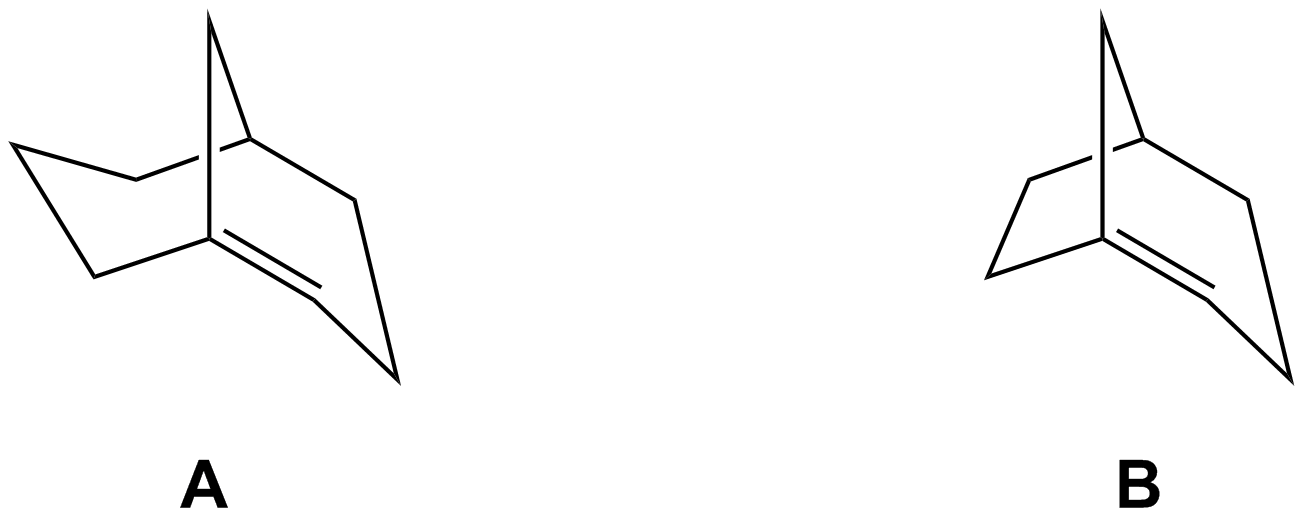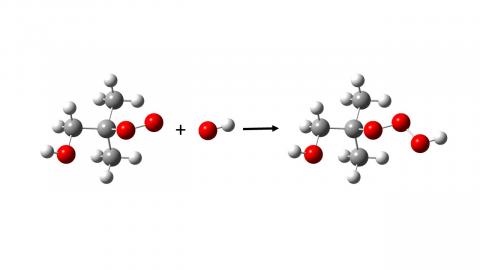Organic chemists break century-old Bredt's rule
A research team describes in the journal Science how to create organic molecules whose geometry breaks the so-called Bredt's rule. According to this 1924 rule, double bonds between two carbon atoms cannot exist at certain positions in a molecule. Until now, this rule has limited the types of molecules that scientists can imagine and make.

241031 - Héctor Busto Bredt EN
Héctor Busto Sancirián
University professor, chemistry department
The geometry in which atoms are arranged in a molecule determines many of its properties and, therefore, how they react with other molecules. There are chemical bonds which, because of their characteristics, have a fairly rigid arrangement. When these bonds are found in compounds with a distorted geometry, they can give rise to highly reactive species. This is the case of double bonds in certain arrangements of cyclic compounds.
Bredt's rule rules out the existence of compounds with such arrangements. What the authors of the paper demonstrate is that such compounds, even those under high stress, can exist long enough to react with other substances. This study, which could lead to changes in advanced Organic Chemistry textbooks, will also allow new reactivities to be explored. The scope of this publication will be seen in the coming years, depending on how this reaction can be controlled and what products can be obtained through it.
Miquel Solà - regla de Bredt EN
Miquel Solà Puig
Director and researcher at the Institute of Computational Chemistry and Catalysis of the University of Girona
Hydrocarbons are compounds made up of carbon and hydrogen. An alkane is a saturated hydrocarbon in which each carbon is bonded to four carbon or hydrogen atoms. An alkene is an unsaturated hydrocarbon that has at least one carbon-carbon double bond in its structure. The carbon atoms of the double bond and the two atoms attached to each of them are in the same plane.
Both alkanes and alkenes can form cyclic and bicyclic structures, in the latter case with two fused rings. For bicyclic alkenes, the Bredt rule formulated in 1924 states that molecules cannot have a carbon-carbon double bond at the junction of the two rings of a bicyclic molecule. The presence of a double bond in this position is only possible if the carbon atoms of the double bond and the atoms attached to it deviate significantly from the flat structure preferred by double bonds, thus generating a highly stressed and unstable structure. This tension explains the difficulty of accessing bicyclic structures with double bonds at the junction of the two rings and justifies Bredt's rule.
This article in Science shows how to make molecules that violate Bredt's rule, allowing chemists to find practical ways to make them and use them in reactions. Even so, the anti-Bredt molecules they manage to synthesise are highly reactive and cannot be isolated and characterised, showing that they are highly unstable molecules. However, researchers have been able to demonstrate their existence by reacting them with other molecules. In this sense, one hundred years after its formulation, this work demonstrates that Bredt's rule is not generally applicable and opens a way for the synthesis of highly distorted alkenes that can be very useful in the synthesis of highly complex molecular structures present in certain drugs.
Luca McDermott et al.
- Research article
- Peer reviewed
- Experimental study

